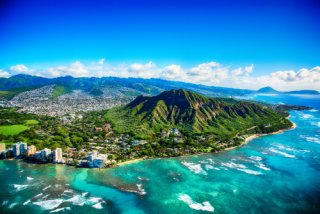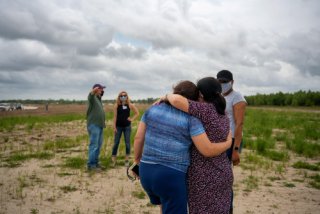Climate Change and the Health of Indigenous Populations
There are many different Indigenous populations in the United States. These include those native to the contiguous United States, Alaska Natives, and Pacific Islanders. Many of these groups are more vulnerable to the health impacts of climate change than the general population because:
- In general, Indigenous populations have higher rates of certain medical conditions than the general U.S. population.1 These include asthma, heart disease, diabetes, obesity, and dementia.2 These chronic medical conditions put individuals at more risk for illness and injury as the climate changes.3
- They have a special connection to the natural environment. Climate change is threatening natural resources and ecosystems that are essential to people’s livelihoods, food sources, and cultural practices.4
- Institutional barriers can affect tribes’ abilities to adapt.5 These barriers can limit tribes’ access and control over traditional lands and natural resources that will be increasingly impacted by climate change.6
- Many Indigenous populations lack reliable infrastructure. They cannot always access essential services, such as transportation, drinking water, sanitation, disaster response, and health care. This limits their ability to plan for and respond to climate-related threats.7
Photo caption endnote:8
On this page:
- Key Threats to the Health of Indigenous Populations
- What You Can Do
- Investigate Other Populations At Risk
- Related Resources
- Endnotes
EPA Adaptation Resources
EPA works to protect and improve human health and the environment. Helping vulnerable populations adapt to and protect themselves against climate impacts is a part of that. See additional resources on related EPA adaptation efforts:
Key Threats to the Health of Indigenous Populations
A number of climate-related hazards threaten the health of Indigenous populations in the United States. Below are some examples of the potential health impacts of these hazards.
Water-Related Illnesses
Many Indigenous communities already lack safe drinking water and/or drinking water treatment infrastructure. This is particularly true for those located on remote lands.11 Another threat to water infrastructure is thawing permafrost.12 When permafrost thaws, it destabilizes the ground above it, affecting buildings and other infrastructure.

Untreated, contaminated drinking water can cause disease outbreaks and illnesses . For example, infants living on the Fort Apache reservation in Arizona have had higher hospitalization rates for diarrheal disease than infants in the general U.S. population.13
Increasing water temperatures and other climate changes can also encourage the growth of harmful algal blooms . People can get sick if they swim in, drink water, or eat fish or shellfish contaminated by a harmful algal bloom. In southeast Alaska, several tribes are working with government agencies to monitor harmful algal blooms.14 These efforts are helping to ensure the safety of subsistence shellfish harvests.
In Hawai‘i and the U.S.-affiliated Pacific Islands, rising temperatures, changing rainfall patterns, and sea level rise threaten water supplies. Saltwater contamination from sea level rise is already affecting water supplies on some islands.15 In addition, severe droughts are already common and can lead to clean water shortages.16
Photo caption endnote:17
Mental Health Effects

Many Indigenous peoples already have trauma from colonization, removal from their homelands, and loss of traditional cultural practices.18 Climate change impacts to the natural environment are worsening this trauma in some areas.19
Photo caption endnote:20
For example, the Isle de Jean Charles Band of Biloxi-Chitimacha-Choctaw tribe in Louisiana has lost 98 percent of its land mass.21 This loss is largely due to erosion from severe storms, sea level rise, and development.22 The land loss has separated families as some individuals move to a new community. It has also greatly impacted the tribe’s culture, livelihoods, traditional foods, and sacred places.23
In many Indigenous communities, relationships among people, wildlife, and the natural environment are important to mental and spiritual health. A changing climate is disrupting these connections and threatening social networks and knowledge-sharing. This can increase the risk of mental health impacts.





0 General Document comments
0 Sentence and Paragraph comments
0 Image and Video comments
General Document Comments 0


¿Cómo podemos evitar el cambio climático
New Conversation
Hide Full Comment Hide Thread Detail
Además, las comunidades indígenas a menudo tienen acceso limitado a recursos y tecnologías para adaptarse, lo que las hace especialmente vulnerables a los impactos del cambio climático.
New Conversation
Hide Full Comment Hide Thread Detail
Y no querer encontrar otros medios para seguir informándose sobre este tipo de problemas.
Me sirvió mucho esta respuesta,
saludos desde Ecuador 👍 😊
New Conversation
Hide Full Comment
New Conversation